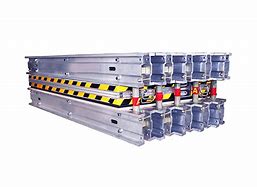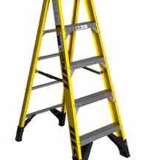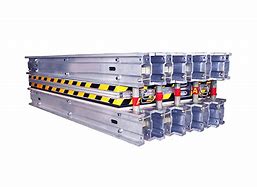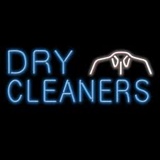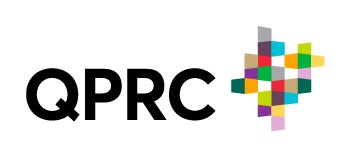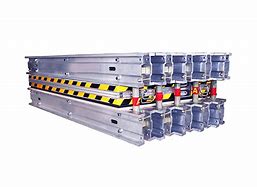Title Page
-
Site conducted
-
Document No.
-
Driver Training Form 003 Version 1
-
Audit Title (Name, Audit type, Mth Yr)
-
Employee Name
-
Vehicle Details
-
Assessor Name
-
Conducted on
-
Location
-
Notes
Driver Training Audit
Driver Training
GENERAL
-
Responsible for keeping all relevant classes and endorsements on driver licence current.
-
Timesheets are to be handed in weekly, no later than 9am on a Tuesday.
-
Ensure confidentiality of all intellectual and business property relating to them.
-
Ensure confidentiality of all clients/customers and all business relating to them.
-
Must maintain a high level of personal hygiene and smart appearance. Professional image very important.
-
Security checks and drug testing may be required for allocated jobs.
-
Must not be in possession, take or be under the influence of alcohol or drugs during work time.
-
All work correspondence such as memo’s, invites etc is via your personal email address.
-
If making a delivery or pick up at the airport and you are required to go through the security gates onto the Tarmac, please be sure to call operations first as we need to organise insurance for this.
-
Comments:
SICK LEAVE
-
After 6 months of continuous employment 5 sick days are accrued and continue to accrue annually, accumulating up to a maximum of 20 days.
-
A minimum of one hours notice must be given before the designated start time.
-
Notice of an intended sick day must be phoned through to the Charter number, this number is monitored 24/7. Do not ring or text managers cellphones.
-
Charter may request a Doctors certificate on the first day of sickness, otherwise a Doctors certificate must be obtained after 3 continuous days absent (including weekends).
-
If you are absent from work and have obtained a medical certificate please ensure a copy is given to Operations asap. If there are any restrictions on your ability to perform normal duties on your return to work please ensure that these are clearly noted on the medical certificate and that these are discussed with management prior to returning to work.
-
Comments
HEALTH AND SAFETY: General
-
Hard Hat Policy. Wear your issued hard hat only. Chin strap must be secured. Must wear a hard hat when in the vicinity of an operating crane truck/gantry crane or if you are required to work at height on the deck of any flatdeck vehicle or unit or at height on the load of any vehicle. (avoid height when possible). Must follow customer site rules but our policy is a minimum requirement to be adhered to at all times on all sites. Request replacement hard hat if expired or damaged. Physical check.
-
If you require access to Charter premises outside your designated working hours, Please gain permission from management. If permission gained you must text/phone that person on entry and exit.
-
With regards to passengers in vehicles you must obtain permission from the general manager/director prior to committing to a passenger. This is done by completing the appropriate form. This applies to both personal and client/customer passengers.
-
The Operations team and drivers who are working extended hours or doing linehaul must communicate at the end of the drivers work day
-
Must have a copy of the latest Health and Safety Policy.
-
Must have personal first aid kit – carry out inventory check and restock if required.
-
No job is that urgent that health and safety is compromised.
-
First Aiders at Charter are Ian Agnew and Mark McLaren.
-
If a job cannot be completed safely, contact Operations immediately. Include in discussion manual work (lifting), loaders, sites and driving.
-
Location of the company first aid kit.
-
Aware of evacuation plan including alarms, megaphone and primary and secondary assembly points at Charter.
-
Not permitted to operate any of the power tools or welding gear in the workshop.
-
The designated Fire Wardens at Charter are Ian, Steve, Dean and Lucy.
-
Aware of the alarm pad procedure to activate alarm and notify Police/Fire/Ambulance
-
Where the fire extinguishers are located at Charter.
-
Allocated fire extinguisher is in the truck and operational. Give it a shake.
-
Forklifts have right of way at Charter. Ensure operator has signaled you before proceeding through the yard.
-
Travelling through the Charter premises is strictly at walking pace.
-
Reinforce forklift/crane and overhead crane safety procedures including constant eye contact and communication.
-
Demonstrate the correct lifting technique.
-
On the job induction(s) completed at client site(s), including all health and safety procedures/review a client site procedure with pre trained driver.
-
All pick up/delivery sites – adhere to site instructions/health and safety visitor information, including all required PPE equipment.
-
You must wear the correct PPE at all times, meaning gate to gate and not when you get out of the truck.
-
Smoking is only permitted in the designated areas at Charter and all client premises. No Smoking in company vehicles.
-
No jumping from truck or trailer decks, fork hoists or truck cabs, 3 point entry/exit.
-
No cellphone use while operating equipment or vehicles unless they have operational bluetooth fitted.
-
How to report identified hazards, safety concerns and health and safety suggestions - location of forms/suggestion box)
-
When removing or placing arms onto panel trailer or onto Flat deck, please be sure to get assistance from another staff member whom can assist with either the forklift or releasing/tightening the ratchets on the arms. These must be stowed away upright in their position in the Dunlop yard. When removing or placing, park the vehicle away from other vehicles. Remember to use constant eye contact and communicate throughout entire procedure.
-
Standing in the braced position when tying down
-
Exclusion zones when devanning/loading containers.
-
Exclusion zones when loading/unloading trucks. Full explanation required (see following diagram)<br>
-
Refer to Consignment Note book
-
Comments:
ANNUAL LEAVE
-
Must ensure annual leave is approved prior to booking or making travel plans.
-
Annual leave can only be approved based on numbers of staff already on pre booked leave. Only a certain number of staff can be on leave at any one time and therefore the first to apply for leave will be the first approved. If the maximum allowable staff are pre-approved during a period applied for, leave for that period will need to be declined.
-
Comments:
INCIDENT/ACCIDENT/NEAR MISS REPORTING
-
Must carry incident/accident/near miss report forms at all times.
-
All above incidents/accidents/near misses must be reported to Operations as soon as possible.
-
Explain the Charter policy, secure the scene, check for injuries, contact emergency services etc.
-
Must always take photographs of any damage and the entire incident scene.
-
Must always carry allocated disposable camera or cellphone with them. (Agree to use personal or work cellphone in lieu of disposable camera)
-
All relevant forms must be filled out no matter how minor the incident/accident/near miss is. This includes customer complaints/freight damage etc.
-
Obtain all details as per the form and NEVER admit liability.
-
Review and discuss any incidents/accidents/near misses the employee has had since their last review.
-
Comments:
CUSTOMER/PUBLIC LIAISON:
-
Front person and often the closest and most frequent point of contact with customers/clients.
-
Explain the importance of image and professionalism.
-
Dealing with difficult customers - be professional, polite and courteous at all times, never argue. Let the customer be right. If situation is getting beyond reasonable control return to truck and contact Operations.
-
It is the Operations role to deal with any issues, challenges or problems. Contact them immediately.
-
Any warranted customer complaints will be recorded and placed on employee files.
-
Rudeness to any customers or members of the public cannot be tolerated. Reminder they are wearing a Charter uniform and driving a Charter vehicle. This includes rude gestures or shouting at other road users.
-
Comments:
CONSIGNMENT NOTES/DOCUMENTATION/LOGBOOK:
-
The importance a clear Proof of Delivery (POD) signature, date and time for every delivery unless otherwise instructed.
-
The counting of consignments on and off the vehicle. Do not sign for the freight unless you have done so. A consignment can either be 10 pallets or 100 cartons, not both.
-
The consignment must conform to the documentation or information you have been given. If not contact Operations immediately.
-
Product handling must be safe at all times.
-
All damaged product needs to be signed as such (from a single package to a shipping container). Do not leave the premises until you have signed the consignment as damaged and have a copy of the documentation proving this.
-
Driver’s daily sheet, timesheet and logbook must all correspond ie: start times, breaks and finish times.
-
Running sheets, consignment notes, and logbook/truck check sheets to be handed in daily. If based offsite ensure this is done as soon as practicably possible.
-
You must regularly check your email for company memos, you should also regularly check the cafe notice board for notices.
-
Nothing is to be written in the charge column of the consignment note.
-
Confirm how to fill out consignment notes, daily sheets, logbook and vehicle check sheet.
-
Finished consignment books are to be handed in with daily paperwork.
-
Take a photo of Logbook example
-
Take a photo of Daily Runsheet example
-
Log books are also to be handed in to the office after the next 24 hour break is recorded in the new log book.
-
Comments:
SECURITY:
-
All freight brought back to the yard is to be reported to operations, who may request the truck to be unloaded or parked under cover if the freight is weather sensitive.
-
The relevant paperwork/consignment notes are to be handed in to despatch. This is also to be noted on the drivers running sheet.
-
All vehicles are to be locked every night and when left unattended. Ensure radio telephones are switched off.
-
Must be familiar with their personal alarm code and alarm arming and dis-arming procedure.
-
Gates to be padlocked if premises are left unattended. (Regardless of whether or not trucks are still to return)
-
If workshop or store is unattended contact operations before entering.
-
If last back to the depot they are aware of entire lock up procedure.
-
Comments:
MPI/TRANSITIONAL FACILITY:
-
What is MPI?
-
What is a transitional facility?
-
For drivers, what checks need to be done when picking up a container at port.
-
Who can open a container, once it is at Charter's Depot?
-
Where is the Biosecurity equipment kept and whats it used for.
-
Where is the Operating manual kept
-
When a container arrives at Charter, what is the process to follow
-
What is your role as an AP. (See, Contain and Report)
-
Is any container itself at risk
-
What do you do with any waste (sweepings) from a container
-
Comments:
COMMUNICATIONS:
-
Familiar with call sign number and correct use of the radio telephone.
-
Know the correct charging procedure of the hand held units.
-
Familiar with the paging system and answering radio telephone with their location.
-
Must call despatch prior to entering Charter site for direction on which entry to use.
-
Inform Operations when and where clear after each job and after the last designated job of the day.
-
Be fully trained in the use of scanners and the charging procedures (if applicable).
-
Comments:
GPS/ROUTE SELECTION:
-
To carry map or GPS with them at all times.
-
The importance of current RUC’s which must be displayed on the vehicle at all times (Eroad and labels).
-
Observe route selection during review.
-
Comments:
ROAD USER CHARGES (RUC's) - HUB/EROAD:
-
Know type, tonnage and maximum payload limits compared to the loading certificate and maximum axle loadings.
-
How many RUC’s their unit has remaining and where they record this information on their daily running sheets.
-
Eroad unit must display green light at all times to indicate the unit is functioning correctly.
-
Functions of Eroad, including RUC’s, live tracking, activity and route reports, idling times, over speeds, fuel economy and service reports.
-
Comments:
LOADING/OVERSIZE/TIE-DOWN EQUIPMENT:
Needs to be able to explain and/or demonstrate:
-
When carting certain steel products that cannot get wet a cover must be placed over the product before leaving site
-
The correct legal and safe placement of a load on a truck/trailer.
-
The legal requirements of restraint required for that load (with or without headboard). Explain dunnage use/avoid steel on steel, use of stanchions, baulking.
-
How to use strops and ratchets, chains and ausbinders and their certified ratings. Explain edge protection, protect product from tie downs.
-
The certified anchor/tie down points, their ratings and where the certified plate with this information is situated on the unit.
-
If the unit has permits for over length, must be in vehicle.
-
If the vehicle has HPMV overweight permits, must be in vehicle. Must know max weights and allowable routes specific to that permit(s).
-
What maximum length and/or width required on that vehicle (without pilot requirements).
-
Explain oversize signs/flags minimum/maximum requirements for non- pilot loads.
-
Loads exceeding legal non pilot oversize loads to be referred to operations.
-
Explain travel time restrictions.
-
Lighting requirements during hours of darkness.
-
Must produce their copy of the New Zealand Loading Code.
-
You are required to use your stanchions at all times when practicable. Stanchions are usually utilised for loads of mixed steel, however there are many other products we cart whereby the use of stanchions is required.
-
When carting James strong product, please be mindful when it’s raining to leave the centre poles in to avoid the water running down to the low point and running off down the side.<br>Remove them one at a time as the unit is being unloaded.
-
Comments:
LOADING CERTIFICATE:
The Employee must explain and understand the:
-
Tare weights of the truck/trailer.
-
GVM and GCM of the truck/trailer.<br>
-
Maximum Legal axle, axle set and total payload/gross weights for their designated vehicle in accordance with RUC’s.
-
Comments:
HAZARDOUS GOODS:
-
Unit has hazardous placarding, haz satchel inside driver’s door, functional fire extinguisher (if applicable).
-
Driver licence has current hazardous goods endorsement (if applicable).
-
Explain who is responsible for the correct hazardous documentation and where this must be kept in the vehicle.
-
Must produce hazardous goods handbook and segregation wheel and carry with them at all times.
-
Responsibility to keep hazardous goods endorsement current.
-
Comments:
PRACTICAL DRIVING TEST/ON JOB DRIVING: Pre Drive, Safe and Professional Driving Practices
-
Operator Rating System (ORS) – Discuss 1-5 star rating and how it is measured. COF’s, roadside inspections, traffic infringements in all company vehicles.
-
Discuss wear and tear on components. Include clutch/gearbox/driveline/suspension/tyre wear etc.
-
Discuss dangers of complacency, overconfidence and cockiness.
-
Driver fatigue, tips on identifying the warning signs of driver fatigue – stop to revive then drive.
-
Discuss G forces, sudden/emergency braking. The most extreme G force is from 25kph to coming to a complete stop.
-
To err on the side of caution eg: change down an extra gear when reducing speed for corners, bends or roundabouts.
-
Centre of gravity and its effects on cornering/accelerating and braking.
-
Explain static roll threshold (SRT).
-
Sharing the road with other motorists and cyclists, be aware of manoeuvring a larger vehicle and blind spots etc.
-
Discuss other motorists and cyclists lack of understanding of what is required to manoeuvre a large vehicle and the blind spots.
-
Driving to the conditions, weather, congestion, built up areas.
-
Load and total gross weight consideration.
-
Preempt events happening that may or may not happen. Expect the unexpected.
-
Unknown weight distribution in loaded shipping containers.
-
Idling times and engine shut down.
-
Dash Lights: If any lights show on the dash display please contact operations to discuss. If it shows a red light please stop immediately and contact operations.<br>
-
ABS/EBS: Discuss/explain ABS/ EBS. ABS, Antilock braking system, designed for safety to avoid locking up and skidding causing to loose control EBS, Electronic brake system, is applied in conjunction with ABS. it distributes the intensity of braking to certain wheels Differently to avoid uncontrolled traction loss.
-
Comments:
Pre Drive Truck, Documentation and Logbook Check:
-
Driver licence must be produced.
-
Check logbook entries (from the previous 24 hour break) are up to date and within legal requirements.
-
Complete pre drive check and complete daily vehicle reporting pre drive check sheet.
-
If unit is preloaded, check load, load restraint and placement (open curtains if applicable).
-
After having a puncture repair or tyre change completed, wheel nut indicators will be placed on the specific wheel.<br>These will be removed once a retorque has been completed. This should be done within 100kms of travelling.<br>Please communicate with operations to have this done if required.
-
Comments:
DRIVING: OBSERVE:
-
Cab search/mirror search
-
Use of both hands on the steering wheel
-
Correct gear selection to move off – take into account gross weight of unit
-
Clutching and declutching (if manual)
-
Up & Down changing gears
-
Correct range changing (BBH)
-
Acceleration
-
Braking
-
Defensive driving skills/safe driving practices
-
Indicating (enough warning)
-
Road rules
-
Driving to conditions – road/weather conditions, built up areas, schools etc
-
Driving to weight and centre of gravity of the load
-
Complying to speed limits
-
Consideration of other road users
-
Cornering
-
Lane changing and use of left lane
-
Trailer coupling/uncoupling (semi and/or full trailers)
-
Comments:
REVERSING
-
Pre reversing check
-
Reversing right side
-
Reversing left side
-
Reversing in a straight line
-
Mirror search
-
Head search
-
Stop and check (get out of the vehicle and physically check if there are blind spots)
-
Comments:
Crane Truck Training Audit
Safe Operation of a Truck Mounted Crane:
Operational consideration and precautions:
-
Choose the best working position to park the vehicle. The optimum site would be a position that is as level as possible (no slope greater than 5°, check level gauge on vehicle), is sturdy enough to accommodate the vehicle stabilisers/outriggers (provide\place pressure on pads for pre check if unsure) and provides unrestricted views of the unloading process.
-
The operator must not be positioned between the load and the vehicle at any time during lifting. Operate from the opposite side. The remotes allow you the ability to stand clear.
-
The stabiliser should be fully extended as directed by the manufacturer’s recommendations and blocked if on soft ground.
-
Do not lift the truck wheels off the ground with the stabiliser. (The weight of the vehicle is supported by the wheels with the stabiliser/outriggers giving stability)
-
Ensure that the ground around the vehicle is clear of tripping hazards.
-
Maintain a minimum distance of 4 metres at all times between any part of the crane or load and power lines. Minimum distance of 10 metres from high voltage power lines and allow 12+ metres in wet conditions.
-
Lift Plan assessed & completed with Operator (Completed Plan attached to review)
-
Know how to operate any safety device for the particular crane.
-
-
Ensure that any inspection certification requirement for the crane is up to date, inspect crane, mountings and equipment on a daily basis.
-
Comments:
When lifting loads, there are some important things that you must not do:
-
Never stand or walk under a suspended load or let anyone else do this. Every work site must have an Exclusion Zone in place, keep builders etc clear. Use a tag line where required and only allow builders etc to enter the zone to assist with placement and/or unhooking once its below knee hight.
-
Do not exceed the rated capacity of the crane.
-
Comments
Keep out of the danger zone at all times. The danger zone includes:
-
The path of the crane’s components
-
The path of the load.
-
Any potential crush area such as between the vehicle and the load.
-
Comments:
-
Failing to observe these instructions at all times could lead to death or serious injury.
Load slinging
-
Incorrect slinging or load attachment will also lead to accidents. Make sure your load is within the rated capacity for the device and any slings or lifting chains are adequate for the weight of the load. The following points must be observed:
-
Ensure that the load is slung in a way that it will not shift in the sling when lifted. This will require careful consideration of the centre of gravity and balance. (Direct load, choke hitch, basket hitch)
-
-
-
Carry out a trial lift slowly at first to check that the load is balanced.
-
Ensure a steady movement of the load during slewing.
-
Ensure that slings are in a safe and undamaged condition and are fitted with the current inspection tag.
-
Check the slings, chains etc have sufficient ratings for the load being lifted.
-
After selecting the site, park the vehicle, apply the handbrake and chock the wheels if on sloping ground. The slope is to be no greater than 5° as this can cause uncontrolled slewing of the boom downhill or no power to rotate up hill.
Stabilising the truck
-
The following actions may be required to ensure optimum operating conditions:
-
Ensure the stabilisers are not overloaded and are blocked if on soft ground.
-
Ensure tyre pressures are correct, as low pressures may affect stability.
-
Whenever possible, the vehicle should be level, but in any case no more than 5˚ inclination in any direction.
-
Whenever working near trenches, banks or holes the distance from the edge to the vehicle should be equal tothe depth or height of this feature.
-
Comments:
Operational requirements
-
Always follow the instructions provided by the manufacturer.
-
Warm up the engine and oil before lifting.
-
Also:
-
Watch out for a change in stability as the load is extended. (keep an eye on the lit LED scale on the remote)
-
Operate within the capacity of the rating chart.
-
Keep the suspended load in view at all times during operation.
-
Never leave a crane unattended with a load suspended.
-
Do not drag, or pull laterally with the boom.
-
Be aware of the safety devices such as:
-
Safe load indicators (LED scale on the remote and traffic light tower on the crane)
-
Emergency cut-off
-
Limitation of rotation; and
-
Overload protection and anti two-block protection for cranes fitted with hoists!
-
Be extra careful when operating mirrored controls!
-
After operating the crane
-
Ensure the load is secured in accordance with the NZTA Code of Practice for the Safety of Loads on Heavy Vehicles
-
Fold the crane correctly into its cradle. If you are placing the crane along the headboard then it must be restrained.
-
Retract and stow stabilisers.
-
Ensure all hooks and loose items are secure.
-
Check the height of the stowed crane before moving off.
-
If there is a ladder in the vehicle, this must be tied in using the supplied bungy cord behind the driver’s seat. You are responsible for making sure the ladder is maintained and in good working order. If you have any issues with it, speak with management.
-
As per the diagrams on the ladder, keep fingers out from between the steps when lowering down the ladder back to its closed position.
-
If/when despatched to an Apollo site, ladder must be footed by another person.
-
Comments:
Crane Checks:
-
Outrigger warning buzzers working
-
Check hook and safety latch
-
Check for loose bolts or montings
-
Check hydraulic leaks
-
Check hydraulic tank and fluid levels
-
Check crane mounting is secure
-
Check current certification (there is a copy in the truck)
-
Check emergency stop button
-
Check cylinder extensions for leaks
-
Check the stabiliser legs and outriggers for structural issues or leaks
-
Check all lifting equipment is compliant and safe ie slings, shackles and chains
-
Comments:
Forklift Training Audit
FORKLIFT OPERATOR SAFETY RULES AND OPERATION GUIDELINES
Safety Rules
-
Only properly trained, certified and authorised personnel should operate a forklift.<br>
-
If operating in conjunction with a driver, offsider or other person(s), maintain eye contact at all times. If eye contact is lost cease operation of Forklift immediately until eye to eye contact is regained and the person(s) is confirmed to be in the exclusion zone.
-
When operating in conjunction with other person(s) whom is responsible for rigging/chaining or bearing product, operation of the forklift is to be ceased until the person(s) is clear and returned to the exclusion zones.
-
Whilst loading/unloading or travelling loaded, it is the responsibility of the Forklift operator to police the<br>exclusion zones. If breached cease operation of the forklift immediately until the exclusion zones areas are restored. This includes ensuring drivers/passengers do not remain in the truck cabs.
-
Always look in the direction of travel.
-
Remember the effects of tail/rear end swing.
-
Only carry loads that are supported by the back frame.
-
If a bulky load obscures forward vision, drive in reverse. (However the load must lead when travelling up gradients, ramps or slopes –obtain spotter guidance if required)
-
When approaching crossings in aisles, gangways or any blind spots, slow down sound horn.
-
Avoid making fast starts, jerky movements and quick turns.
-
Passengers must not be permitted to ride on the forks/load or any other part of a forklift.
-
Always keep a safe distance from other vehicles.<br>
-
Avoid running over loose objects.
-
Keep a safe braking distance and never overtake when approaching cross roads or blind corners.
-
Always cross obstacles diagonally whenever possible.
-
Never push on the point of one or both forks.
-
Before moving off, (forward or backward) look around, check your area of responsibility and when clear move off without inconveniencing others.
-
Drive at a speed consistent with the load you are carrying and workplace conditions.
-
Never place any part of the body between the uprights of the mast or outside of the forklift cab.
-
When leaving the forklift, ensure that the controls are at neutral, power is shut off, brakes applied and forks are lowered.
-
If you are required to elevate personnel use an approved work/safety platform.
-
Carry loads as close to the ground as possible.
-
Always watch load and mast overhead clearance.
-
When travelling keep the load against the back frame, with rear tilt applied.
-
Do not permit anyone to stand under elevated forks.
-
Do not elevate load with mast tilted forward.
-
Slow down for wet and slippery areas.
-
Bring the forklift to a near stop before reversing.
-
Watch side clearance with wide loads.
-
During devanning, a forklift is not to be left within the freight container idling for extended periods under any circumstances
-
Reminder to only operate forklifts within the Charter Premises. It is against our policy to operate a forklift at a customers site.<br>If you are asked to operate a clients forklift you must contact operations first and get the all clear. Operations will contact the customer first to discuss options/outcomes.
-
Comments:
Sign off
-
Assessor Comments:
-
Employee Comments:
-
Assessor Signature:
-
Employee Signature: My signature here confirms that I have read and understand this full training document and the latest version of the ‘Charter Health and Safety Policy’.
-
-
Employee Signature: I have read and fully understand The NZ Transport Agencies Official New Zealand Loading Code.
-
Marc's Signature:
-
Dean's Signature:
-
Mike's Signature:

















